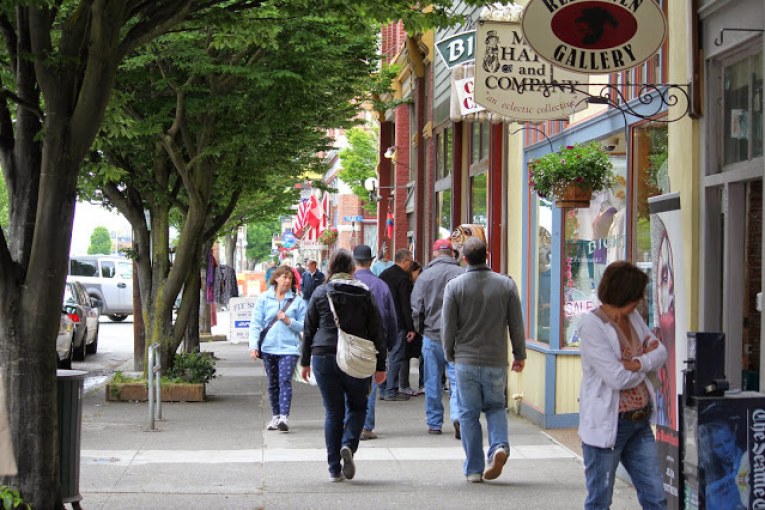

By Michael Bisch
“Public parking spaces serving multiple uses can be expected to be better utilized, and serve more drivers, than private parking spaces serving a single building or business, which often sit vacant for much of the day and evening.” – City of Davis Community Development staff
All too often pundits and protagonists in our community conversations fail to provide proper context and fail to distinguish between the means and the ends. The result is generally a muddled mess of a debate. The conversation around the downtown parking in-lieu fee program is certainly no different. Parking in-lieu fees are not the end (and neither is another downtown parking structure). The city’s in-lieu fee program is a means. It is a means for advancing our community’s social, environmental and economic sustainability. In this particular instance, it is a means for achieving the following City Council goal:
- Build and Promote a Vibrant Downtown
This Tuesday evening, the Davis City Council will consider changes to the downtown parking in-lieu fee program. For those readers unfamiliar with the term, “parking in-lieu fee program,” this generally refers to governmental programs financially incentivizing developers, architects and urban planners working in tight urban environments to create more innovative and sustainable projects which forgo traditional onsite minimum parking requirements. The financial incentive typically comes in the form of a fee paid by the developer, which is cheaper than the cost of actually developing the parking onsite. In many cases, the incentive offered amounts to waiving the in-lieu fee entirely.
I’ve written this opinion piece to provide readers and policy-makers insight from the perspective of someone who has a multi-faceted, day-to-day, working knowledge of our downtown and its function as the city’s primary business district, art and entertainment district, shopping and dining district and social gathering place.
The term “parking in-lieu fee,” while technically accurate, is very misleading and misses the underlying purpose almost entirely. These programs are not parking management tools. They are social, environmental and economic sustainability tools. The city’s parking in-lieu fee program advisor, Walker Parking Consultants, accurately states:
“The effects of the amount at which a parking in-lieu fee is set are woven into a city’s planning, transportation, environmental, fiscal, development and economic development, and infrastructure policies. The setting of this rate is therefore only partly a technical exercise. It also reflects a city’s policy priorities and economic constraints of development in the future.”
It is for this reason that I was the sole member of the Downtown Parking Task Force to vote against Recommendation #19: Re-examine In-Lieu Fees and Procedures. The context for the re-examination of the program was all wrong (i.e. exclusively parking management).
Far more accurate descriptors for a “parking in-lieu fee” would be:
“Superior architecture bonus”
“Pedestrian streetscape enhancement incentive”
“Retail enhancement reward”
“Economic development bonus”
“Sustainable development inducement”
Parking in-lieu fee programs encourage development professionals to be innovative, to take financial risks, to design projects that advance community social, environmental and economic goals instead of settling for traditional, mediocre projects. Let there be no doubt…parking a redevelopment project onsite is the safe, traditional, mediocre route. The investors are happy, the lender is happy and the tenants are happy. But how do shoppers, diners, moviegoers and other downtown visitors feel about private parking lots scattered all about a downtown? Well, let’s ask the city’s form-based codes advisor, Opticos Design. Referring to small, private onsite parking lots as “parking mini craters,” they state:
“Mini parking craters are just as detrimental to a community as large ones, particularly to walkable urban neighborhoods, but they are also an opportunity.”
They go on to say:
“Well-designed compatible infill on these lots will make neighborhoods more vibrant and more walkable. This urban repair should be a goal for all neighborhood planning and coding projects.” [Emphasis added]
But, we don’t have to take Opticos’ word for it. We can take an informal survey right now. As you review these photos, give some thought to which of these projects make more efficient use of scarce air, water and land resources. Which of them provide more housing units, more retail and office space? Which of them enhance the pedestrian shopping experience and promote social interaction? I.e. which of them promote community sustainability?
Do you prefer the Roe Building (all or most of the parking off-site)?
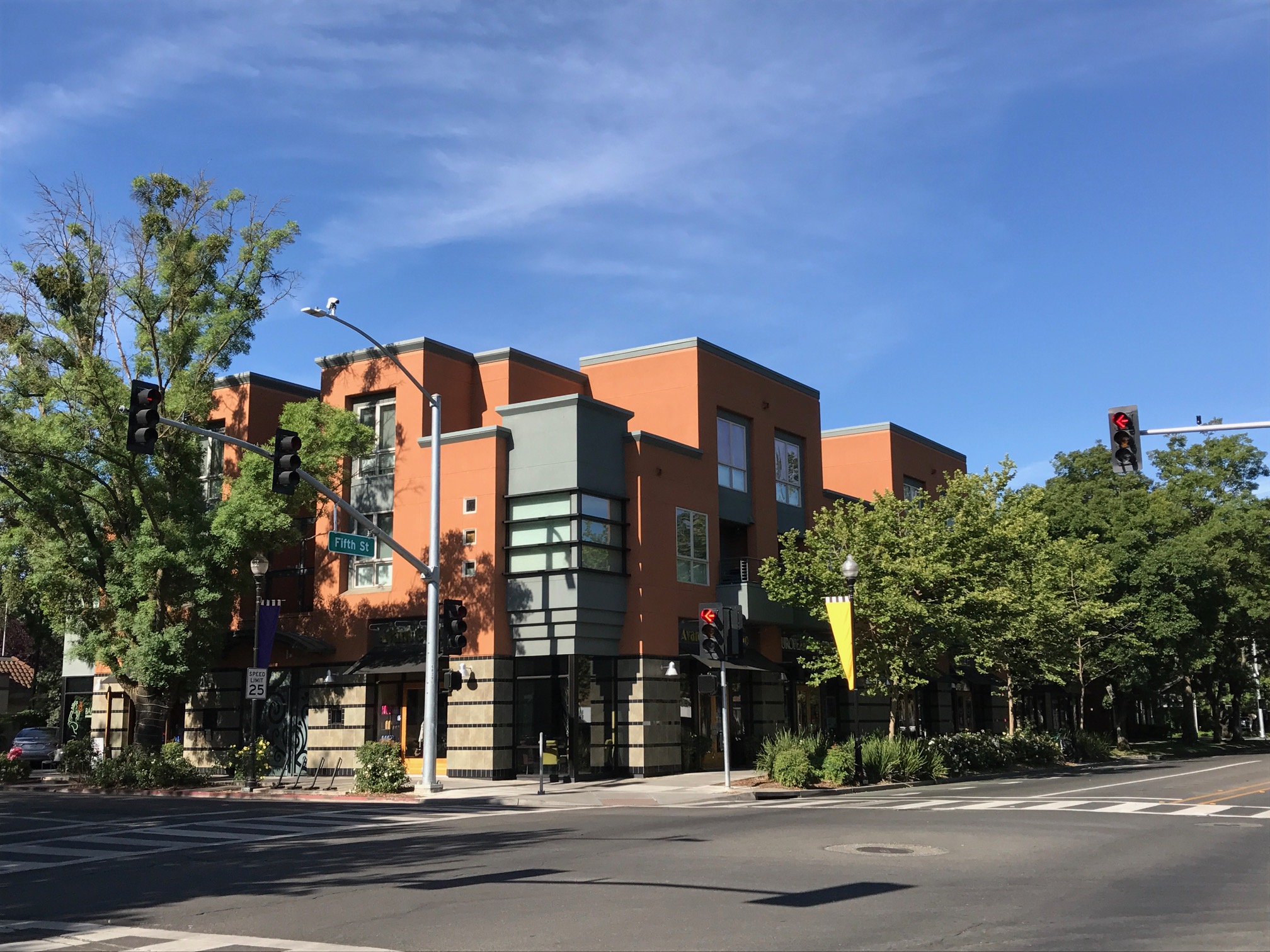
Or the YFCU Building (all of the parking onsite)?
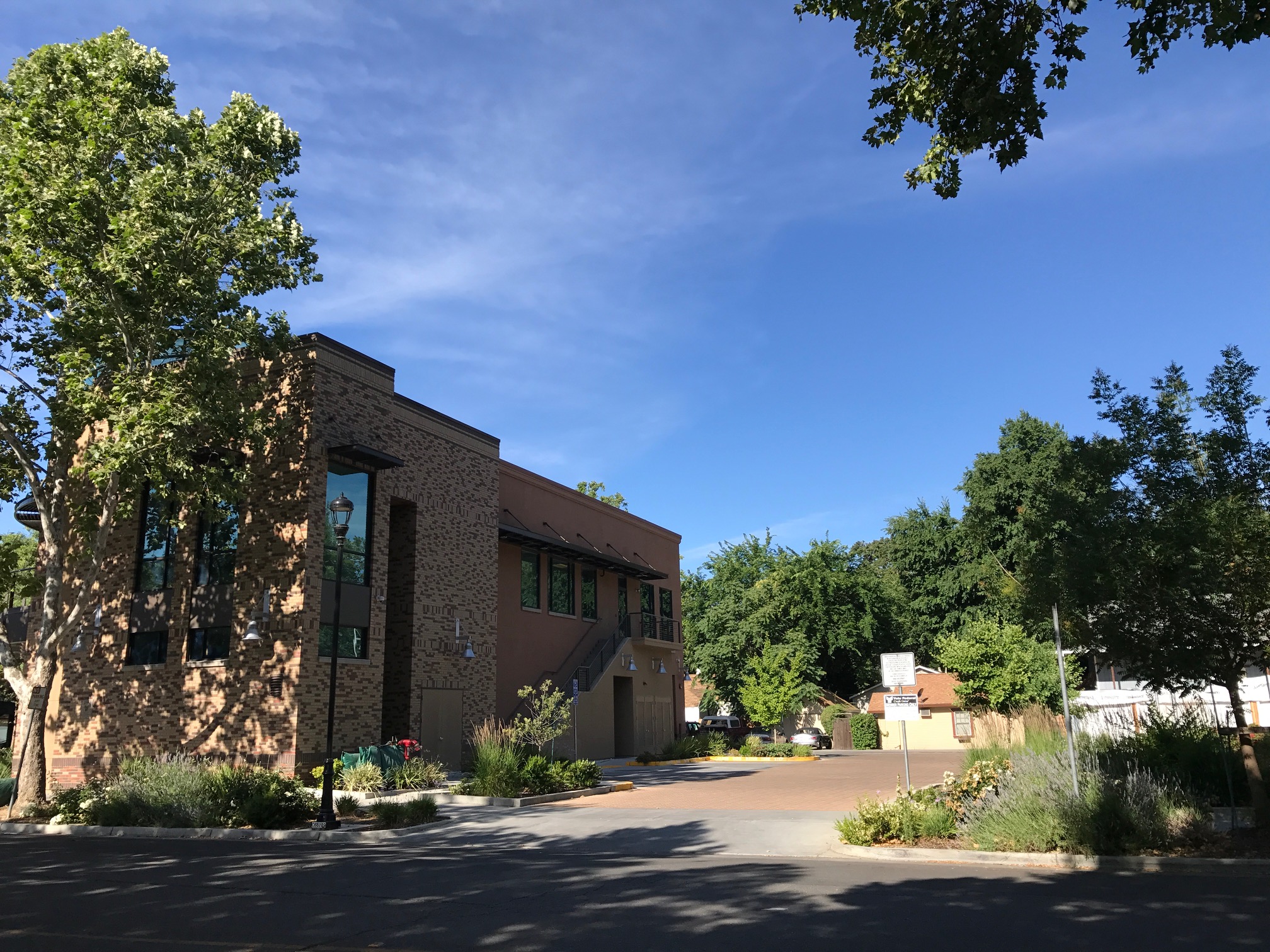
Do you prefer the Village Grill Building (all or most of the parking off-site)?

Or the Jack-In-Box (all of the parking onsite)?
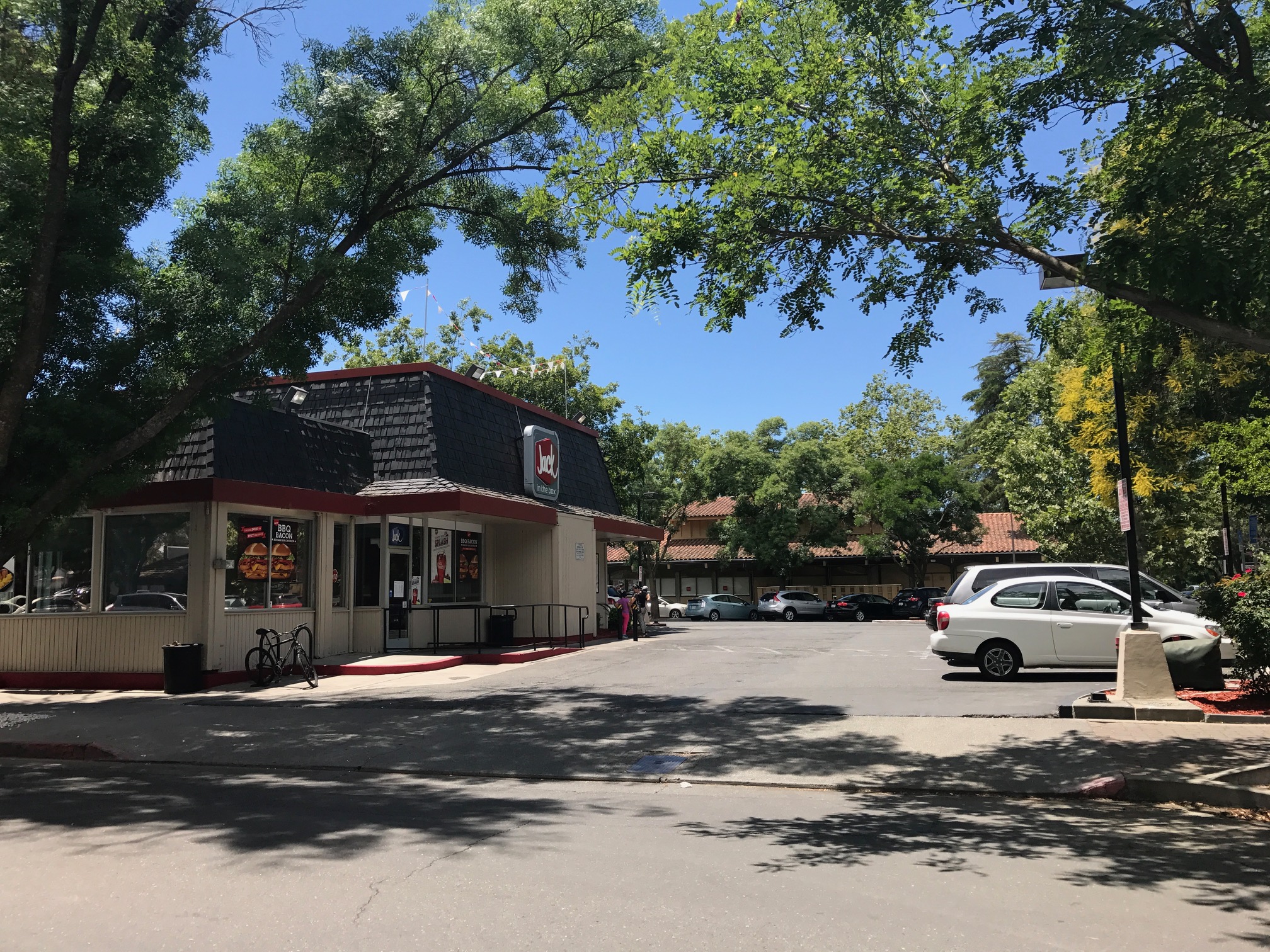
Do you prefer the Chen Building (all or most of the parking off-site)?

Or the AT&T property (all of the parking onsite)?

Do you prefer The Lofts (all or most of the parking off-site)?

Or the Bank of America Building (all of the parking onsite)?

Do you prefer the Crepeville Building (all or most of the parking off-site)?
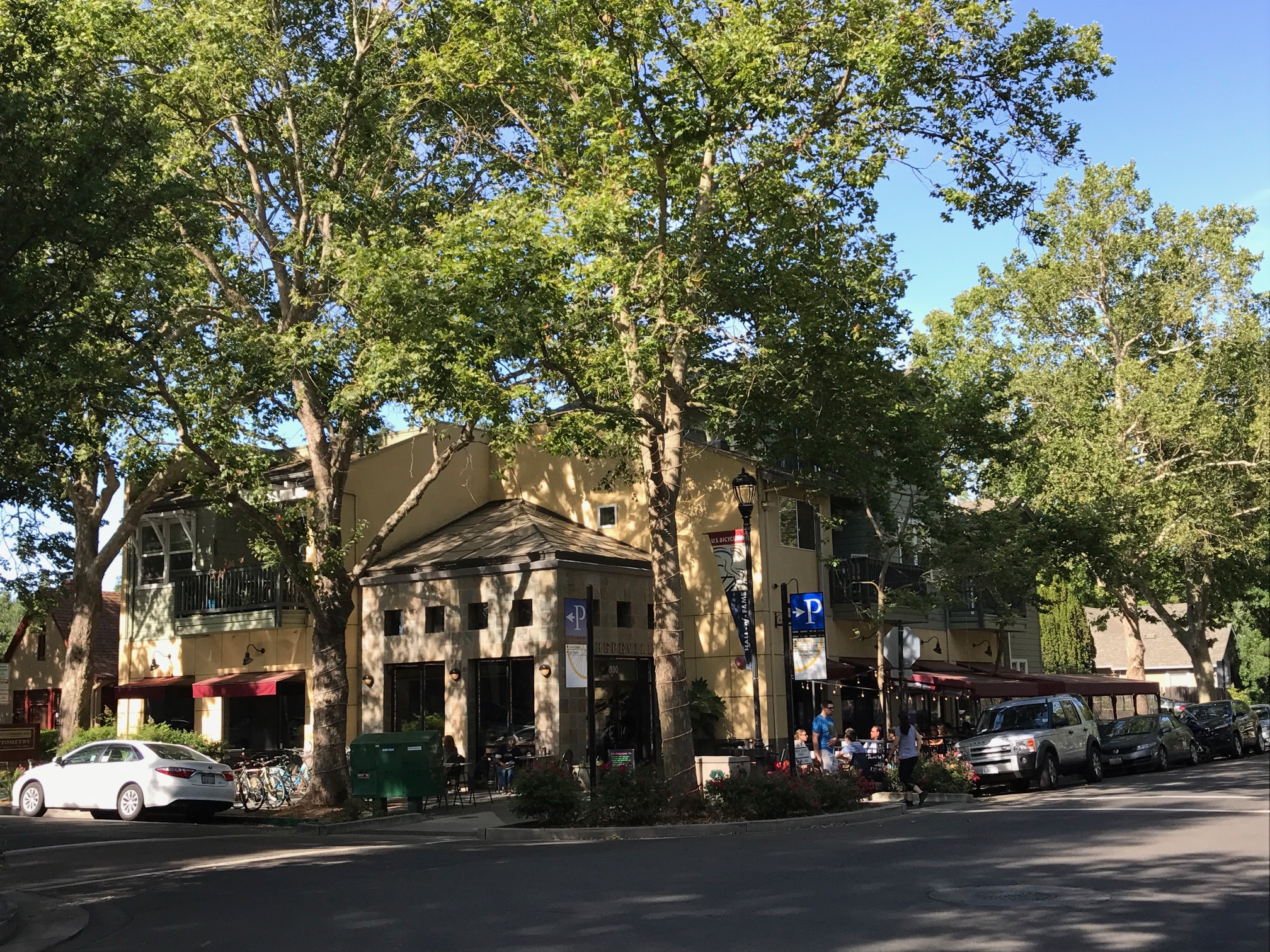
Or the Helmus Building (all of the parking onsite)?

I will be watching the City Council meeting with interest Tuesday evening as they discuss which of these projects they’d like to see more of in our downtown (or whether they’d like to see any more redevelopment projects at all). Will the Council encourage innovative, sustainable development projects or the more traditional type of development projects? And, just as importantly, will the Council adopt clear, effective policies to advance in their desired direction? We shall see.
-Michael Bisch is the owner of Davis Commercial Properties, a provider of commercial property management, leasing and brokerage services. He has served as a volunteer in a number of downtown-related community service organizations such as Davis Arts Alliance, Pathways to Employment and Davis Downtown.

I don’t understand the point of this article. However, the photos which show examples of buildings without parking lots are more “attractive-looking” then those the examples with parking lots. (Was that the point?)
Parking lots are not always unattractive, if there’s plenty of trees. Also, I don’t mind parking a short distance away, and then walking to my destination. (Depending upon how congested an area is, this is sometimes the “easier” option.)
One thing for sure – we’re not going to “do away” with cars by failing to build adequate parking. And, downtown (in particular) will always rely upon cars (even as we move toward electric cars, etc.).
Clarification – trees, OR solar panels over parking lots. Solar panels provide shade and energy.
And are a more efficient use of land than trees. [when one is developing a parking lot]
Ron: I think his point is: “The term “parking in-lieu fee,” while technically accurate, is very misleading and misses the underlying purpose almost entirely. These programs are not parking management tools. They are social, environmental and economic sustainability tools. ”
And he said he was against the item 19 changes to the in-lieu structure
David: I saw that, but I’m not sure what Michael is objecting to. What concerns does he have with “item 19”?
“In-lieu of” fees are tools to help manage and construct parking, affordable housing, etc. To suggest otherwise is confusing to me. (Too “conceptual” in nature.)
Reminds me of the argument that the appropriate amount of development fees for new apartment complexes is a “social” issue (rather than a “financial” issue).
Michael wrote,
Reading is FUNdamental!
Howard Read it, and saw it the first time. No need to repeat that whole thing, here. Still don’t know what the concerns are, regarding item #19. (Actually, the proposed changes aren’t explained in this article, in the first place.) And, the purpose of Michael’s citation isn’t entirely clear to me.
To clarify, the citation itself seems to include conflicting arguments.
K.
You ignore the fact that Michael was ‘one’… gotta be ‘personal’ for you…
Howard: More unfounded conjecture, from you. Just a poorly written article (other than the photos).
“One” what?
Per Michael,
Don’t think he was talking ‘fish’, nor shoe bottoms.
You just identified the point of Michael’s article, to educate those who, like you, have an incorrect understanding of the purpose of the program (as demonstrated by your statement that I have quoted).
As Michael states:
It isn’t a difficult concept and Michael’s examples emphasize the point. If we want a more inviting, vibrant, walkable downtown, we need to reduce the number of the parking lot ‘islands.’ The in-lieu fee program is a means of achieving that.
Gee, that sounds an awful lot like “managing and constructing parking”, to me – as I just stated. If he (or you) would prefer the other descriptions he used (e.g., “superior architecture bonus”, pedestrian streetscape enhancement incentive”, “retail enhancement reward”, “economic development bonus”, “sustainable development inducement”, then who am I to say that it starts sounding like a lot of hot air?
O.K. – so Michael supports larger, centralized parking areas, paid for via “in-lieu of” fees. (Probably would have been easier and clearer to state that in the first place, rather than citing conflicting quotes.) Yes, I can see the advantages of that approach, as long as the fees are sufficient and space is available.
Still don’t know what the proposed changes are, regarding item #19. (Yes, I realize that I can research this. However, such information might normally be included with an article.)
Reading comprehension is so very important. From Michael’s text:
Thanks, Mark. I think I can “see the light”, now. Michaels’ statement apparently shows that it has “absolutely nothing to do with” parking (despite your statement, quoted above). It is so much more than that!
Again, still not sure what Michael is objecting to, regarding a “re-examination” of fees and procedures. What’s “wrong” with doing that? If he opposes a “re-examination”, he hasn’t provided any arguments whatsoever.
The proposal is not to re-examine the in-lieu fees, it’s to change their structure.
The basic problem, Ron, is the need to pull your head out of your 1950’s thinking. The important issue is not who pays for the location where you temporarily store your car, but rather, how do we incentivize developers to create the inviting, walkable, vibrant downtown experience that defines successful communities now and for the future. If you are focused on the minutia of ‘parking,’ you are missing the more valuable ‘big picture’ discussion on how we create an economically successful downtown. It isn’t parking, it is the entire environment, with in-lieu fees being just one tool.
Yes, that assumption is a big part of the problem here. I suppose a case can be made for calling this “managing” parking, but “constructing parking” is neither mentioned nor implied.
Let’s pretend that we have more cars* in downtown than we have spaces to park them. To “improve” this parking situation, I typically hear that we need more car parking. I mean, duh. Obvious, right? Just like when there’s freeway congestion, clearly we need more lanes! In fact, there is another compelling answer that checks off many, many more boxes in the quality of living column, and that is finding an agreeable, affordable way to reduce the number of cars that arrive downtown.
* Purely hyptothetical, as empty parking stall counts have shown us for years.
Since most people prefer to drive to their shopping and dining destinations, the effect of any policy that results in fewer places to put cars would be to reduce revenues downtown.
More 1950’s thinking.
Downtown has already shifted to become more of an entertainment zone rather than a retail one. As that shift continues, and as the local community becomes more accustomed to Uber, Lyft, and the sort, the demand for parking will diminish. Replacing the parking islands downtown with new mixed-use buildings, with shopping and entertainment on the ground floor and residential above, will make the downtown more attractive, inviting, and walkable, all while increasing revenues to the City. The major retail that remains will need to evolve their business model to match the current reality, adding customer pick-up zones near their stores, and perhaps increasing delivery options.
Many useful ideas here. A shift to an entertainment zone has some drawbacks. Planners should seek a balance of retail, entertainment, residential, and professional. Parking doesn’t have to be paramount, but it needs to be planned in effectively. http://uli.org/wp-content/uploads/2012/07/TP_NeighborhoodRetail.ashx_1.pdf
Most residents and visitors who have cars (and use them to go downtown) are not going to give them up anytime soon. (Regardless of Uber, Lyft, or future “flying cellphones” that magically transport people through the air.) Davis is not (yet) San Francisco. Do you really think that eliminating parking spots has had any impact on the amount of driving, in the area?
Concerns raised by “pro-development” types regarding costs associated with parking strike me as a way to avoid responsibilities associated with impacts generated by developments. (Hell, they just can park in surrounding neighborhoods, right?)
However, as stated previously, I can see the advantage of having centralized, larger parking lots – assuming “in lieu of” fees are sufficient, and space is available. (Hopefully, with solar panels covering the lots.)
Clarification – I should have referred to “limiting” parking spots, since none (to my knowledge) have been “eliminated”. Either way, it’s not going to have much impact on the amount of driving, or the need to park (somewhere nearby).
Just to add one more comment, I always appreciate the underlying argument that Uber and Lyft “somehow” reduce traffic/driving. (Probably creates more driving, since the vehicle has to travel extra distances to reach passengers.) And, even those cars have to park somewhere.
But hey, it sounds cool, doesn’t it?
To correct the record. Despite the assertion of some here, at no time in the history of Davis has the parking in-lieu fee program been tied to parking supply management or increases (construction). We have had an in-lieu fee program since the late ’70s. Not a single dollar from the in-lieu fee program has been invested in parking supply management or increases in parking supply. We have approximately 2,000 public parking spaces in the downtown. The construction of every single space was financed through parcel assessments, RDA increment taxation or the general fund revenue (and possibly parking meter revenue). The program has been used 100% as a financial incentive to stimulate redevelopment. I can show photo after photo of downtown projects, large and small, that were facilitated by the in-lieu fee program.
You can argue until you’re blue in the face, but those are the facts. That doesn’t mean that the program can’t be revised to be a parking management-and-supply-centric program. But that certainly hasn’t been the case to date.
Looking at the photos provided and thinking about the attractiveness of the corresponding areas of downtown to me it is clear that the smaller the parking area the nicer, more pedestrian-friendly the area is. This is the way good cities end up being either by design or happenstance. There is no charm to a parking lot.
On a related note I have been wondering of late why all of the new developement in our downtown has been three stories or less. It seems to me that there would be a market for apartments and condos in five or eight story buildings. Downtown there wouldn’t be the NIMBY privacy objection as there are few backyards in the core area. There are many old folks like myself who would love to live downtown.
Paul… not sure 8 stories is “in the cards”… for at least 10-15 years… but a minimum of four, up to at least six, is a reasonable goal for the central Core for the reasons you cited…
Might even send a message to UCD… by example…
I agree for the *central core* . . . but there is this core bloating creep being proposed by the City to extend the “Core” to 8th & L Streets. No s**t. Engulfing both Old East and Old North. To what end is this being proposed?
I’m not crazy about that “guy”, either.
I’ll give you credit for that one.